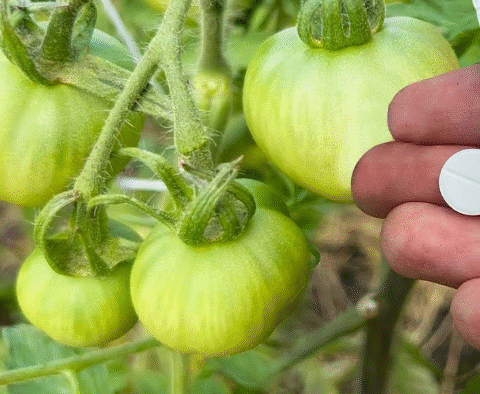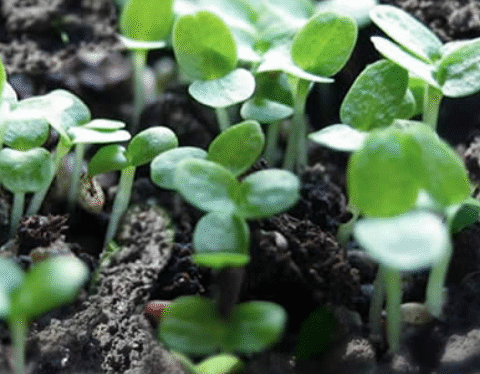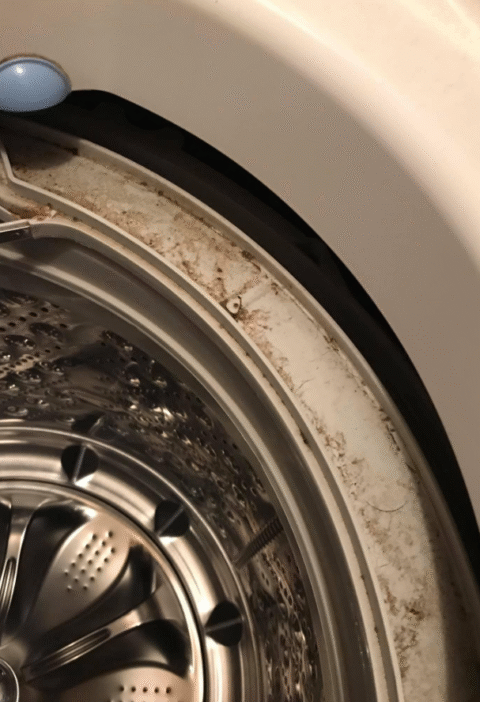Lamb’s Quarters (Chenopodium album): The Super‑Nutrient Wild Spinach You Might Ignore 🌱
Lamb’s quarters—also called wild spinach, goosefoot, or Bathua—is a leafy green that grows prolifically in gardens, fields, and roadsides. Though often dismissed as a weed, it boasts a nutritional profile that rivals cultivated superfoods. Rich in vitamins A, C, K, calcium, iron, magnesium, fiber, protein, and potent antioxidants, it supports immunity, digestion, heart and bone health. In this article, we’ll dive into what makes lamb’s quarters so healthful, how to prepare it safely, and why it deserves a spot at your table.
What Is Lamb’s Quarters?
Chenopodium album is a fast‑growing annual herb native to Europe and Asia, now found worldwide. Part of the Amaranthaceae family (alongside quinoa, spinach, chard), its dusty, pale‑green leaves and forked diamond shape make it easy to recognize. New growth often appears lightly coated in whitish “dust.” Each plant can generate thousands of seeds, helping it thrive as a wild edible.:contentReference[oaicite:1]{index=1}
Nutritional Profile: A Powerhouse in a Weed
Per 100 g raw leaves, lamb’s quarters provides:
| Nutrient | Amount per 100 g | % Daily Value |
|---|---|---|
| Calories | 43 kcal | ~2 % |
| Protein | 4.2 g | 8 % |
| Fiber | 4 g | 16 % |
| Calcium | 309 mg | 31 % |
| Iron | 1.2 mg | 15 % |
| Magnesium | 34 mg | 8 % |
| Potassium | 452 mg | 13 % |
| Vitamin A | 580 μg (11,600 IU) | ~64 % |
| Vitamin C | 80 mg | ~89 % |
| Vitamin B2 (Riboflavin) | 0.44 mg | 34 % |
| Vitamin K | ~890 μg per cooked cup | ~741 % |
Raw lamb’s quarters delivers ~43 kcal, 4.2 g protein, 7.3 g carbs (with 4 g fiber) and minimal fat. It ranks among the top 9 % of foods for calcium and vitamin A content.:contentReference[oaicite:2]{index=2}
Cooked (boiled, drained, with salt), one cup (~180 g) offers ~58 kcal, ~6 g protein, ~9 g carbs, ~464 mg calcium (46 % DV), ~518 mg potassium (11 % DV), ~66 mg vitamin C, and ~17,460 IU vitamin A (~78 % DV), plus ~890 μg vitamin K (~741 % DV).:contentReference[oaicite:3]{index=3}
Key Health Benefits
1. Potent Antioxidants & Anti‑Inflammatory Effects
Lamb’s quarters contains high levels of beta‑carotene, lutein, quercetin and other flavonoids. These antioxidants help neutralize free radicals, reduce oxidative stress, and support cellular health.:contentReference[oaicite:4]{index=4}
2. Bone Health Support
With significant calcium (~309 mg per 100 g) plus magnesium, iron, potassium and exceptionally high vitamin K (especially once cooked—one cup supplies ~741 % DV), lamb’s quarters provides a plant‑based trifecta in support of bone density and mineralization.:contentReference[oaicite:5]{index=5}
3. Digestive Health & Fiber
At ~4 g of fiber per 100 g, lamb’s quarters promotes regular bowel movements, feeds beneficial gut flora, and supports digestion and nutrient absorption. Its low net carbs (~3 g) also make it lightly alkalizing.:contentReference[oaicite:6]{index=6}
4. Rich in Essential Vitamins & Minerals
This wild green surpasses common spinach in several key nutrients:
- Vitamin A: ~11,600 IU per 100 g (about 2.5 times spinach):contentReference[oaicite:7]{index=7}
- Vitamin C: ~80–90 mg per 100 g—supports immunity and collagen formation:contentReference[oaicite:8]{index=8}
- B‑complex vitamins (riboflavin/B2, B6, niacin, folate)—aid energy metabolism and cell function:contentReference[oaicite:9]{index=9}
- Trace minerals: copper (~0.29 mg), manganese (~0.78 mg), zinc—contributing to antioxidant enzymes and metabolism:contentReference[oaicite:10]{index=10}
5. Potential Traditional & Medicinal Uses
In folk medicine, lamb’s quarters has been used traditionally as a poultice to relieve joint swelling, rheumatism, arthritis, and even toothache when chewed. Certain tribes use its powder for skin applications, nasal drops, or digestion aids.:contentReference[oaicite:11]{index=11}
How to Harvest & Eat Lamb’s Quarters Safely
✅ Identification & Foraging Tips
- Look for lightly dusty pale-green leaves, alternate branching stems, slight white coating underneath younger leaves.:contentReference[oaicite:12]{index=12}
- Harvest young, tender leaves (under 1 foot tall) for best flavor; older leaves become tougher. Larger leaves are better cooked.:contentReference[oaicite:13]{index=13}
- Avoid plants grown near roads, industrial runoff, nitrates, heavy metals—lamb’s quarters is known to absorb soil contaminants.:contentReference[oaicite:14]{index=14}
- Beware of look‑alikes like nettleleaf goosefoot—smell the leaf; lamb’s quarters has a distinct scent.:contentReference[oaicite:15]{index=15}
🍳 Preparation Tips to Reduce Oxalates
- Cooking (steaming, boiling, sautéing) significantly reduces oxalic acid, improving mineral absorption.:contentReference[oaicite:16]{index=16}
- Use lemon juice or vinegar when consuming raw to neutralize oxalates.:contentReference[oaicite:17]{index=17}
- Wash thoroughly to remove dust, pollen, grit. Especially important for seeds.:contentReference[oaicite:18]{index=18}
Nutrition & Health Benefits Summary Table
| Benefit | Key Nutrients | Role in Health |
|---|---|---|
| Immunity & skin health | Vitamin A, C, antioxidants (beta‑carotene, lutein, flavonoids) | Supports collagen, protects cells from oxidative stress |
| Bone & blood health | Calcium, magnesium, vitamin K, iron | Promotes mineralization, blood clotting, oxygen delivery |
| Digestion | Fiber, prebiotic components | Aids regularity, ulcer prevention, gut microbiome support |
| Metabolism | B‑vitamins (B2, B6, niacin, folate) | Energy production, DNA synthesis, nervous system support |
| Mineral cofactors | Copper, manganese, zinc | Aid enzyme function, antioxidant defense |
Realistic Health & Safety Tips
- Cook older or large leaves to reduce oxalates; consume raw in moderation.
- Harvest from clean, uncontaminated locations only.
- Start with small servings to check for digestive sensitivity or allergic reaction.
- Avoid if prone to kidney stones, gout, or hyperacidity due to oxalates and nitrates.:contentReference[oaicite:19]{index=19}
- Pregnant or nursing women should consult a healthcare provider before foraging and eating wild greens.
Simple & Delicious Lamb’s Quarters Recipes
Steamed Lamb’s Quarters with Lemon & Sesame
Young leaves, rinsed and steamed 5–7 minutes. Drizzle with sesame oil, soy or liquid aminos, squeeze fresh lemon juice, sprinkle toasted sesame seeds. Simple, nutrient‑dense, and delicious.:contentReference[oaicite:20]{index=20}
Wild Green Spread (similar to pesto/spread)
- 3 cups young lamb’s quarters leaves
- 1 ripe avocado
- 2 garlic cloves, 1 small red onion
- ½ cup toasted nuts (walnuts or almonds)
- 1/3 cup olives, 2 Tbsp miso, chili or cayenne to taste
- Blend or finely chop everything for a flavorful spread. Serve with crackers or in wraps.:contentReference[oaicite:21]{index=21}
Seed Flour or Grain Add‑In
Dried lamb’s quarters seeds can be ground into flour or added to porridge, bread, flatbreads or muffins for a nutrient‑boost. They’re high in protein and fiber. Soak or rinse first to reduce saponins.:contentReference[oaicite:22]{index=22}
Expert-Style Insight
Dr. Amal Hariri, plant‑based nutritionist, remarks: “Wild lamb’s quarters offers an astonishingly dense source of calcium, vitamin K and antioxidants—especially in cooked form—that often surpasses conventional leafy greens.”
Prof. Javier Cortez, ethnobotanist: “Traditional medicine across Europe, South Asia and Indigenous America has long employed lamb’s quarters for digestive issues and inflammation. Modern nutrition science is now catching up.”
10 Frequently Asked Questions (FAQs)
- Can I eat lamb’s quarters raw? Yes—young leaves can be eaten raw in moderation. However, they contain oxalates; cooking or using lemon juice helps reduce these levels.
- Does it really outperform spinach? Yes. Lamb’s quarters typically contain 2–3× more vitamin A, higher calcium, protein and vitamin C than spinach.:contentReference[oaicite:23]{index=23}
- How often should I eat it? Like any leafy green, 2–3 servings weekly is excellent—more if you tolerate it well and source from clean areas.
- Who should avoid it? People with kidney stones, gout, hyperacidity—or pregnant women without guidance—should avoid frequent raw consumption due to oxalates and nitrates.:contentReference[oaicite:24]{index=24}
- Can children eat it? Yes—cooked, in small amounts. Introduce slowly and monitor for any digestive reaction.
- How to reduce contaminants? Always harvest from unpolluted areas. Rinse thoroughly. Cooking helps reduce oxalates and nitrates slightly.
- Is it invasive? Very. Each plant produces thousands of seeds and grows easily in disturbed soils. Consider harvesting rather than removing.:contentReference[oaicite:25]{index=25}
- Can I use the seeds? Yes—the mature black-brown seeds can be collected, rinsed, dried, ground into flour or used in porridge or bread.:contentReference[oaicite:26]{index=26}
- Any medicinal value? Traditional use includes poultices for swelling, toothache, and digestive relief. Limited modern clinical evidence supports these folk uses.:contentReference[oaicite:27]{index=27}
- Do cooked leaves retain nutrients? Yes—cooking slightly reduces vitamin C but enhances absorption of minerals (calcium, iron) and reduces oxalates.
Conclusion
Lamb’s quarters is a nutritional treasure hiding in plain sight—often mistaken for a weed, yet one of the most nutrient-dense wild greens. From bone-building vitamin K and calcium to powerful antioxidants like beta‑carotene, it offers benefits that rival or surpass cultivated greens. Whether steamed, blended into spreads, or added as seed flour to baked goods, lamb’s quarters deserves a second look.
Always forage ethically, harvest from uncontaminated soil, and consume cooked for safety. Start slow, enjoy its mild spinachy flavor, and let this wild plant transform your meals, naturally and affordably.






